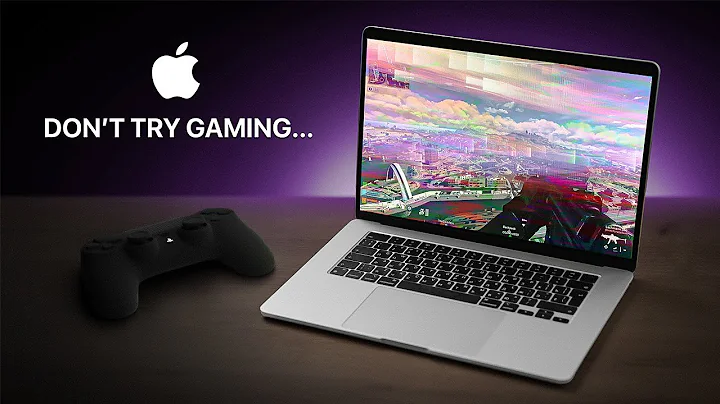Revolutionizing UEFI Debugging: MSOE/NVIDIA Collab
Table of Contents
- Introduction to MSOE Senior Design Team OXOC
- Understanding the Project Scope
- Refocusing Efforts: UEFI Firmware Debugging
- Exploring EDK-2 Build Environment
- Initiating EFI Application Development
- EFI Drivers: Protocols and Functionality
- Hardware Debugging Approach
- Challenges with Intel System Bring-Up Toolkit
- Emulated UEFI Debugging: A Virtual Solution
- Setting Up the Emulated Environment
- Demonstration: Debugging with Emulator
- Goals for Spring Term
- Risks and Mitigation Strategies
- Conclusion
Introduction to MSOE Senior Design Team OXOC
🎓 Meet MSOE Senior Design Team OXOC comprising Grant, Seth, Austin, Tyler, and Colton. As we embark on our senior design journey, we're thrilled to Present the progress of our project in collaboration with NVIDIA's GPU firmware team.
Understanding the Project Scope
🔍 Our project revolves around aiding NVIDIA's GPU firmware team in developing and maintaining low-level software crucial for GPU operation, especially during boot. Initially, we aimed at three solutions: UEFI debug, GQ microcode debug, and early boot graphics.
Refocusing Efforts: UEFI Firmware Debugging
💡 Recognizing the significance of UEFI firmware debug, we redirected our focus to deliver a robust solution. Our goal is to provide comprehensive debugging via hardware and emulator mediums, ensuring seamless integration with NVIDIA's systems.
Exploring EDK-2 Build Environment
🔧 To lay the groundwork, we delved into the EDK-2 environment for UEFI development. TianaCore's EDK II emerged as the optimal choice due to its open-source nature, extensive documentation, and alignment with NVIDIA's existing build system.
Initiating EFI Application Development
🖥️ Crafting EFI applications forms the cornerstone of our endeavor. These bootable EFI images facilitate direct interaction with NVIDIA drivers, enabling us to debug and analyze code execution during system initialization.
EFI Drivers: Protocols and Functionality
🔌 Our journey into EFI driver development unveiled challenges in adding protocols and debuggable functionality. Transitioning to pre-existing drivers within the EDK2 framework streamlined our focus on debugging, enhancing efficiency.
Hardware Debugging Approach
🔬 Leveraging hardware debugging via third-party UEFI solutions necessitated meticulous evaluation of vendors like AMI, Intel, and Waterbox. Intel's System Bring-Up Toolkit emerged as the frontrunner, offering extensive documentation and functionality.
Challenges with Intel System Bring-Up Toolkit
⚠️ Despite Intel's toolkit promise, implementation hurdles surfaced, primarily concerning hardware compatibility. Overcoming motherboard limitations, particularly in enabling Direct Connect Interface (DCI), posed a significant challenge.
Emulated UEFI Debugging: A Virtual Solution
🖥️ In tandem with hardware solutions, we pursued emulator-based debugging for its accessibility and versatility. Opting for the QEMU emulator, we ensured compatibility with NVIDIA's development environment and streamlined debugging workflows.
Setting Up the Emulated Environment
🛠️ Establishing the emulator environment entailed configuring tools like GCC, GDB, and the EDK library. Generating OBMF binary images facilitated seamless integration of EFI applications and drivers, enabling efficient code analysis.
Demonstration: Debugging with Emulator
🔍 A walkthrough of our debugging process showcased the integration of tools like GDB with the QEMU emulator. By setting breakpoints and analyzing memory access, we achieved granular code-level debugging, essential for identifying and resolving issues.
Goals for Spring Term
🌱 Moving forward, our objectives encompass further refinement of both hardware and emulated debugging solutions. Through rigorous testing and documentation, we aim to deliver a robust UEFI debugging toolkit to NVIDIA's GPU firmware team.
Risks and Mitigation Strategies
🛡️ Acknowledging the inherent complexities of UEFI debugging, we anticipate challenges stemming from limited documentation and technical expertise. Mitigation involves fostering collaboration, leveraging external resources, and prioritizing problem-solving.
Conclusion
🎉 As we navigate the intricacies of UEFI debugging, our commitment to innovation remains unwavering. With resilience and collaboration, we strive to deliver a transformative solution, empowering NVIDIA's GPU firmware team with enhanced debugging capabilities.
Highlights
- Collaboration: MSOE Senior Design Team OXOC collaborates with NVIDIA's GPU firmware team to enhance UEFI debugging capabilities.
- Technological Innovation: Leveraging hardware and emulator solutions, the team pioneers advanced debugging methodologies.
- Adaptability: Despite challenges, the team remains adaptable, refocusing efforts to meet project objectives effectively.
FAQ
Q: What prompted the team to Refocus efforts on UEFI firmware debugging?
A: Recognizing the critical role of UEFI firmware in system initialization, the team prioritized a comprehensive debugging solution to address underlying challenges effectively.
Q: How does hardware debugging differ from emulator-based debugging?
A: Hardware debugging involves utilizing third-party solutions to debug UEFI firmware on physical systems, while emulator-based debugging utilizes virtual environments for code analysis.
Q: What challenges did the team encounter during the project?
A: Challenges included hardware compatibility issues, limited documentation on UEFI debugging, and the learning curve associated with navigating complex firmware environments.
 WHY YOU SHOULD CHOOSE TOOLIFY
WHY YOU SHOULD CHOOSE TOOLIFY

























